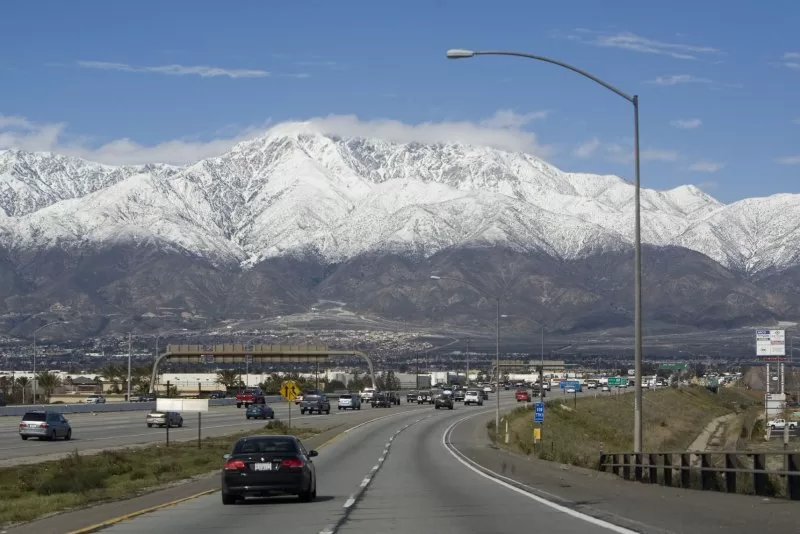1 of 2 | The snow capped San Gabriel Mountains are seen looking north from the Interstate 10 and 15 interchange in Ontario, Calif. Photo by Terry Schmitt/UPI |
License PhotoMay 2 (UPI) — President Joe Biden on Thursday signed two proclamations expanding California’s San Gabriel Mountains National Monument and Berryessa Snow Mountain National Monument.
The San Gabriel proclamation adds 105,919 acres of federally protected land south and west of the monument’s existing 346,177 acres.
Though adjacent to the highly developed areas of Los Angeles, the expansion area includes untouched natural land that offers more access to outdoor recreation and homes to protected wildlife such as the endangered California condor.
“The San Gabriel Mountains National Monument is a crown jewel for Los Angeles. It is a backyard to millions of people, and is also home to cultural resources, rare animals and plants, unique geology and dynamic forests, rivers and high peaks,” Agriculture Secretary Tom Vilsack said in a statement. “President Biden’s actions today ensure this remarkable place is protected for current and future generations.”
President Barack Obama designated the San Gabriel Mountains National Monument in 2014, preserving natural resources and sites that are culturally significant to California’s Indigenous peoples.
Indigenous groups still use the area for ceremonial purposes and to collect plants for basketry, food and medicine.
Also in the expanded area are historic sites such as remains of the Mount Lowe Railway and Cold War-era Nike missile facilities.
The U.S. Forest Service will manage the area according to the terms of the 2014 proclamation.
The Berryessa Snow Mountain proclamation adds 13,696 acres of public land to the monument’s original 330,000 acres designated by Obama in 2015.
The expansion includes an 11-mile portion of the previously named Walker Ridge. Biden’s proclamation also renamed the ridge to Molok Luyuk, which means “Condor Ridge” in the language of the native Patwin people.
Within the expanded area is evidence of Indigenous occupation going back more than 10,000 years.
“The name Molok Luyuk recalls a time when condors were a common sight soaring above the ridge, and the Patwin people would often celebrate them with dances and ceremonies,” Biden said in a statement. “On a clear day, the highest points of Molok Luyuk offer a commanding view of the surrounding rugged and undeveloped landscape, encompassing Mount Shasta to the north, Mount Tamalpais to the southwest, and Sutter Buttes to the east.”
Molok Luyuk is home to nearly 500 native California plant species and wildlife such as tule elk, mountain lions, bears, and bald and golden eagles.
The expansion of Berryessa Snow Mountain National Monument is part of Biden’s America the Beautiful initiative. The Biden administration has conserved more than 41 million acres of American lands and waters.
The Bureau of Land Management and U.S. Department of Agriculture Forest Service will jointly manage the expanded area.
Biden designated the expansion of these national monuments under the Antiquities Act, which President Theodore Roosevelt first used in 1906 to designate Devils Tower National Monument in Wyoming. Since then, 18 presidents from either party have used that authority to protect historic American landmarks, including the Statue of Liberty, Colorado’s Canyon of the Ancients, and New Mexico’s Gila Cliff Dwellings.

